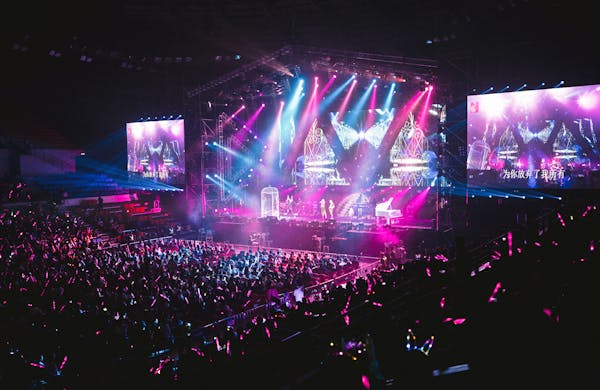Musical performance is a complex endeavor. While performances can also include visual cues, they primarily rely on the audio signal to convey emotions and character.
To improve your musical performance, practice regularly and set measurable goals. This will help you achieve a higher level of skill and confidence. Also, get inspiration from music beyond your genre or instrument. For more information, click on The Eagles Concert Las Vegas Sphere.
Definition
Music performance is a musical art in which performers render a musical “blueprint” into an acoustic realization. The blueprint can be a score in the case of classical music, or it may be a lead sheet for improvisational genres such as jazz.
Performance features such as timing and dynamics have been found to play an important role in communicating structural information to listeners. For example, subtle changes in timing and articulation help listeners perceive metrical structure.
Performance features have also been shown to contribute to a perceived sense of expressiveness. This aspect of a performance is separate from stylistic expressiveness and has been called emotional expressiveness by researchers (). Early expressive features were often hand-designed by musicians, or incorporated into classifiers using musical intuition.
Historical context
Throughout history, music has been an integral part of human culture. It has accompanied weddings, funerals and other religious ceremonies, as well as theatre. Its importance in ancient societies is reflected by direct literary references and the depiction of musicians on ceramics.
Music has also become an art form in its own right, and the boundaries between creative and interpretive activities are increasingly blurred. Historically, musical notation developed in all civilizations to mark the creative process and represent the resulting music.

The development of the microphone has further increased the possibilities for musical performance. Contemporary performers are often influenced by historical styles, and their interpretations may be based as much on invention as on the original recording.
Audience response
The analysis of musical performance is a research field that studies the way a human performer conveys music to an audience. The goal of this research is to understand how different features of a musical performance impact its observers’ perceptions. These features can include tempo variations, phrasing, and dynamics. These variations can vary from one performance to another.
However, it is difficult to determine how much of these features are influenced by the performers. It is also unclear whether observers’ felt affect responses are influenced by the same attributes that influence performers’ own feelings. Therefore, future research is needed to better understand the complexities of the observer-performer relationship.
Techniques
Performing music requires a combination of skills to convey emotions and engage with the audience. These techniques include expressiveness, vocal technique and a knowledge of instruments. Musicians also use performance to promote their music and connect with fans. These goals may be achieved through various techniques, such as improvisation and performance anxiety management.
Expressive techniques such as tempo (speed), articulation (how the notes are played) and phrasing can convey emotions or depict scenes. Similarly, ornamentation can add rhetorical flair to the music.
Performance anxiety is an unavoidable part of a musical performance. It can cause physical symptoms such as an increased heart rate, perspiration and trembling.
Styles
Music has many different styles that are used to express a specific mood or emotion. For example, fast tempos can energize and excite, while slower tempos can create feelings of sadness or reflection. The use of harmony and melody can also evoke emotions. Dissonant harmonies can create tension while consonant harmonies provide resolution and tranquility. Musical gestures can create a sense of drama and intensity, while changing keys (modulation) can indicate shifts in emotion or storyline.
Solo performances are one of the most popular forms of music performance. The solo literature for most instrumental instruments is extensive, especially for piano and vocals. Soloists can achieve great fame and prestige for their prodigious talent.
Audience interaction
Musical performance fosters a sense of community connection and belonging. It can also promote a feeling of purposeful action. However, for some people, the experience of music is not positive. They may experience pathological feelings that interfere with their ability to connect with others or work on their music.
Several studies have attempted to use machine learning methods to predict how well music will be performed. However, they have low prediction accuracies. In addition, most of these models only apply to certain datasets. This makes them less applicable to real-world situations. A successful model should work on a wide range of data and use different features to predict performance quality.